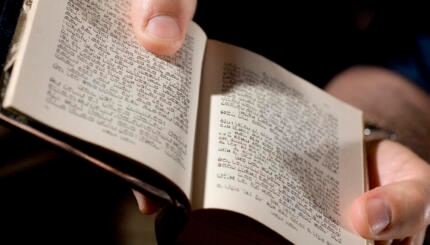“Habemus Papam!” — “We have a pope!” After days of breathless anticipation by Catholics around the world, Cardinal Jean-Louis Tauran appeared on a balcony of St. Peter’s Basilica and uttered the words that precede the announcement of every new pope: “Habemus Papum!” The media has been abuzz ever since about the new Pope Francis, the former Cardinal Bergoglio of Argentina. His selection has been considered noteworthy for being the first Jesuit priest to become pope, the first pope to choose the name Francis, and, most of all, for being the first pope from the Americas. What stood out to to me, though, was not the novelty of all these “firsts” but the relationship between this sense of newness and the role of Catholic ritual that permeated Francis’ selection: from the cardinals sequestering themselves in their conclave to the black and then white smoke billowing from the chimney of the Sistine Chapel to signify that a new pope had been elected. Ultimately, the appointment of the new pope was about this dynamic between tradition and change.
Perhaps it is fitting, then, that the pope was chosen at the same time Jews segue in our cycle of Torah reading to the Book of Leviticus/Sefer Vayikra. Leviticus takes us from the narrative of the Israelite exodus and the foundational moment of revelation at Sinai into the arcane, elaborate, and often hard to penetrate world of ritual sacrifice and impurity. The first two Torah portions in Leviticus, Vayikra and Tzav, offer extensive sacrificial taxonomies, describing with painstaking detail the rituals of the burnt, meal, sin, guilt, and well-being offerings. And the gory details would make even Quentin Tarantino blush: blood being sprinkled about the altar, entrails removed, and on and on. Let’s face it: Leviticus is hard to read and even harder to connect with. How are we to relate to these materials? Is Vayikra obsolete? Unapproachable to modern Jews?
Our Sages of old faced these same questions, but with a good deal more existential angst. Leviticus had served as a priestly manual, instructing the High Priest and his assistants how to perform sacrifices at the Temple. But once the Second Temple was destroyed in 70 CE, sacrifice became impossible. How, then, were Jews supposed to remain Jews? The ancient rabbis, in a brilliant move, took sacrifice and transformed its function into two new modes that would come to define Judaism for the next 2000 years. First, they used the structure of the sacrificial system—its times for sacrifice (daily and holiday) and its liturgical accompaniments (such as the psalms that Levites recited)–to create a new system of daily and holiday fixed prayer. Instead of offering sacrifices as the medium for interacting with God, Jews could pray in synagogues and retain the same (or even better, according to the scholar Maimonides) ability to engage with the Divine.
Second, though there was no longer a need to know the ritual details of the sacrificial system for practical purposes, the rabbis insisted that Jews continue to study Leviticus because the act of studying itself became a proxy for the act of sacrifice. “One who occupies himself with the study of Torah has no need for the burnt offering, the meal offering, the sin offering, nor the guilt offering.” (Babylonian Talmud, Tractate M’nachot 110a) Indeed, nearly the entirety of the Fifth Order of the Mishnah, entitled Kodashim, pertains to Temple worship even though it was redacted several hundred years after the Temple was destroyed. Grappling with our textual tradition and seeking to derive wisdom from it became an end in itself as important as sacrifice was to our ancestors. What the rabbis did, in sum, was to innovate, to radically change Judaism, but to do so through a deep, organic connection to our tradition.
Tradition and change remains the dialectic through which we live our Judaism today. The challenge Judaism addresses, the challenge that faces each of us every day, is to live in the murky waters between tradition and change. If we change too much, giving up aspects of our religion that might not feel important anymore, we risk losing our connection to our heritage. But if we remain too rigid, holding on to rituals and practices just because that’s what our parents and grandparents did, then we risk creating future generations that will be disconnected from, and likely reject, our heritage. What we must do is to follow the lead of our Sages: to push ourselves to engage with our tradition’s rituals and sacred texts so that we can deduce new meanings and new contexts from them, meanings and contexts that will resonate for us in our contemporary lives. It is worth noting that the term “sacrifice” comes from a Latin word meaning “to make something holy.” In Hebrew, the common biblical word for sacrifice is, “korban,” which means “something brought near.” Through our modern-day “sacrifices” of prayer and engaging with our sacred texts, we have the opportunity to draw nearer to God and to embrace holiness.
In some ways, our Catholic friends have it easy. They can rely on a pope to lead them, to be the intermediary between God/tradition and their daily lives. We Jews, however, reject the idea of an intermediary. We are all, in a sense, High Priests. This gives us both the blessing of direct access to the Almighty but also the obligation to do what it takes to gain that direct access. It is my hope and prayer that we will rise to this challenge, creating a vibrant, intelligent, and meaningful Judaism for the 21st century.
Torah
Pronunced: TORE-uh, Origin: Hebrew, the Five Books of Moses.



